
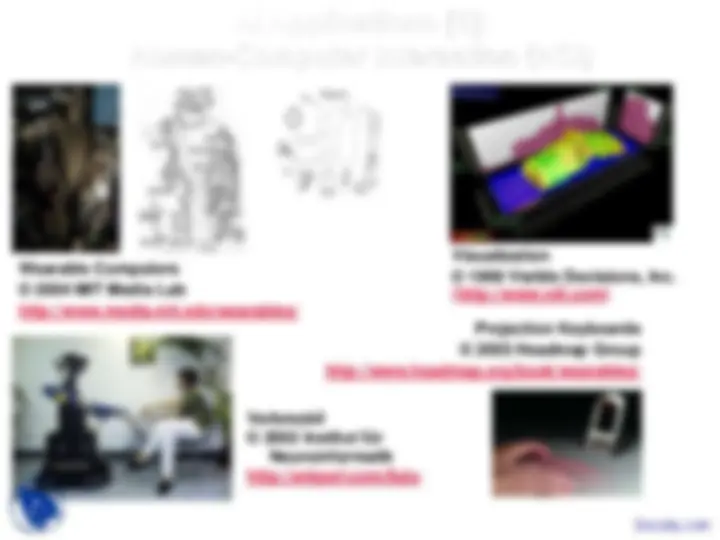

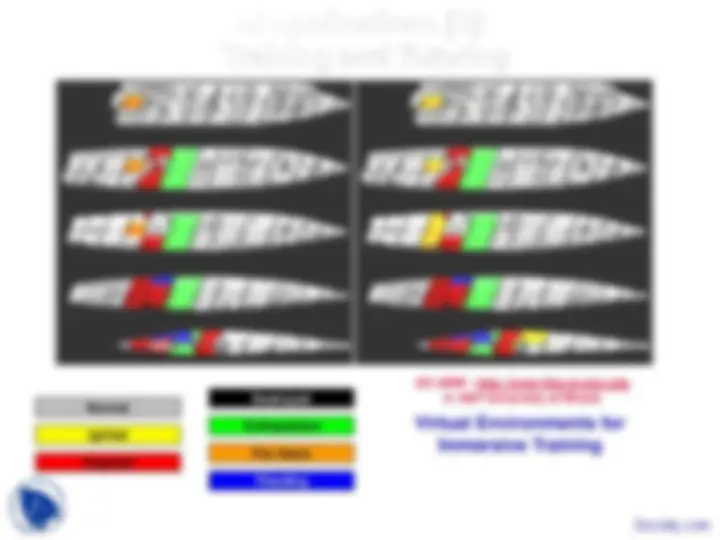
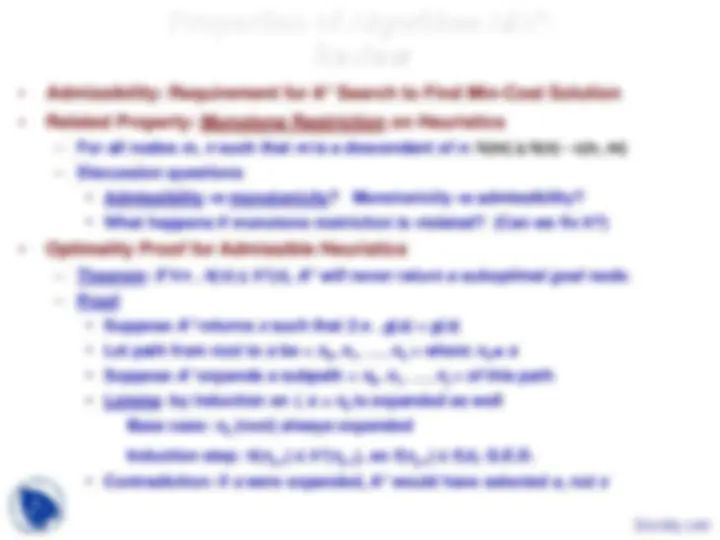
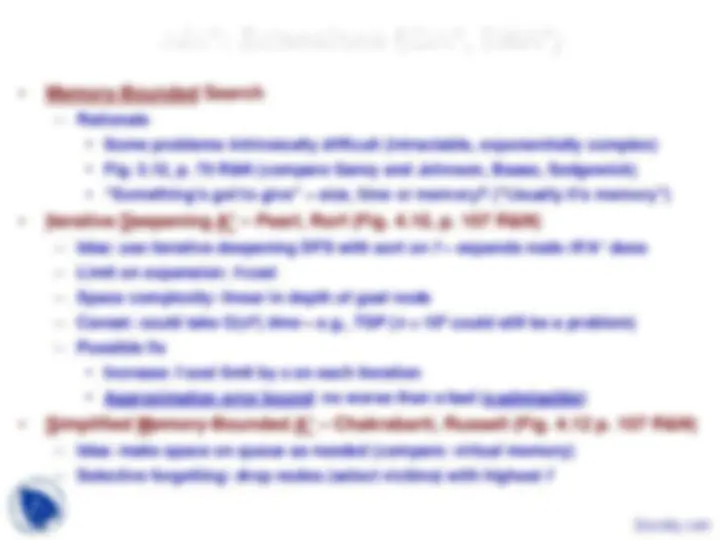
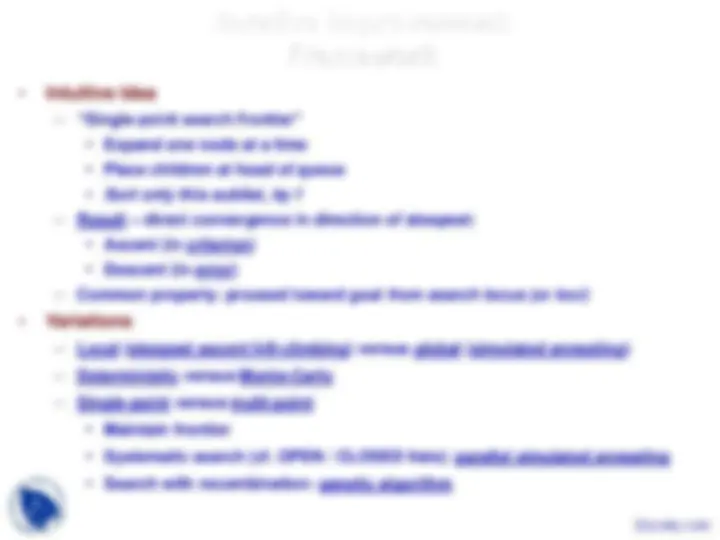
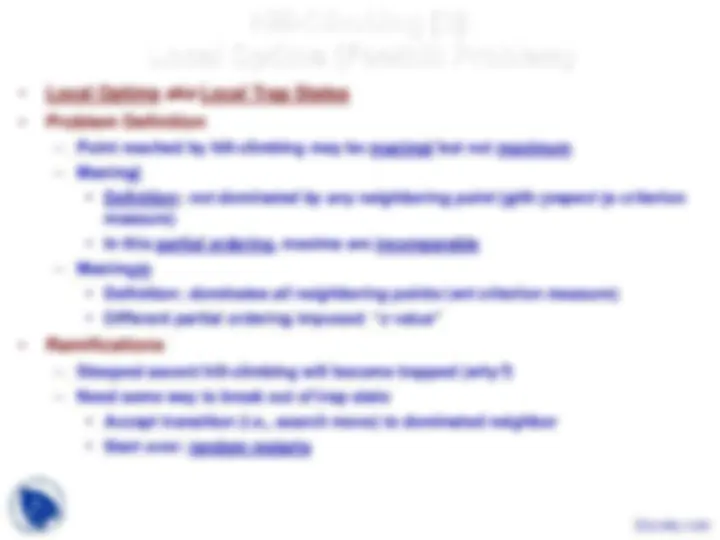
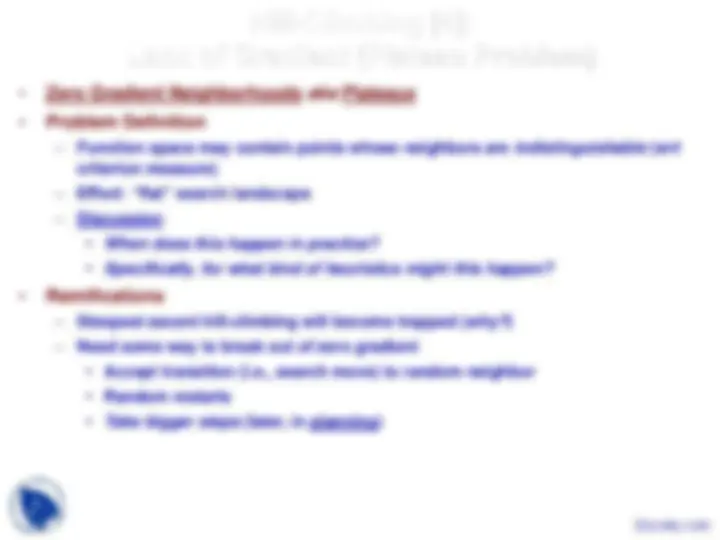
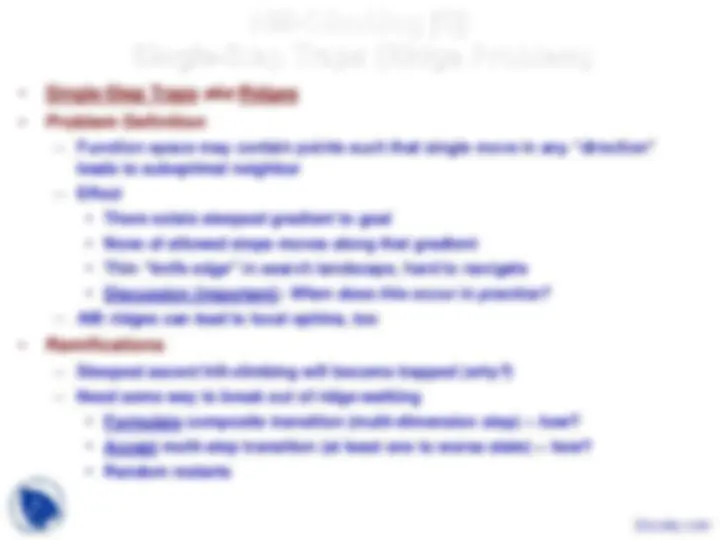
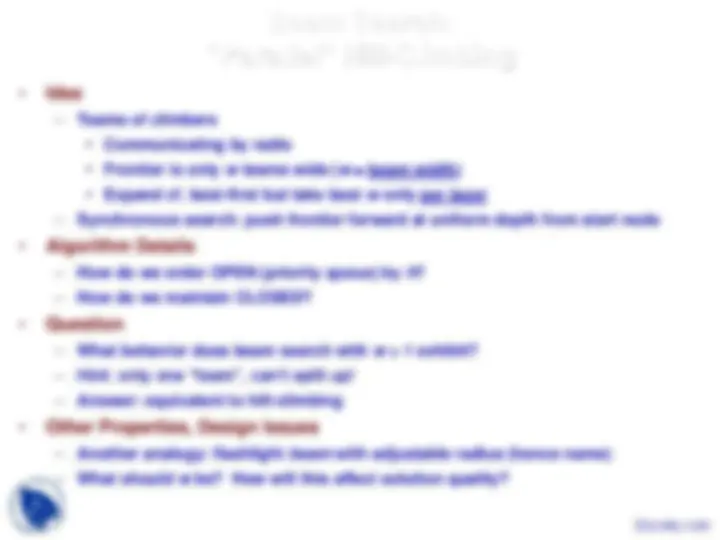
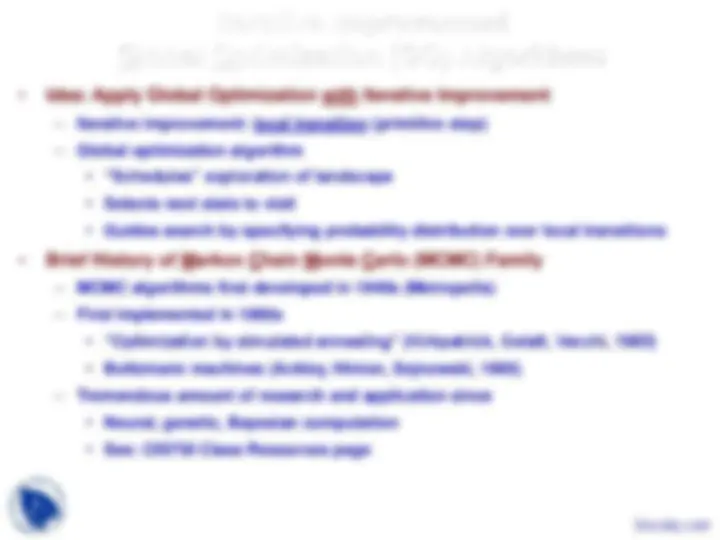
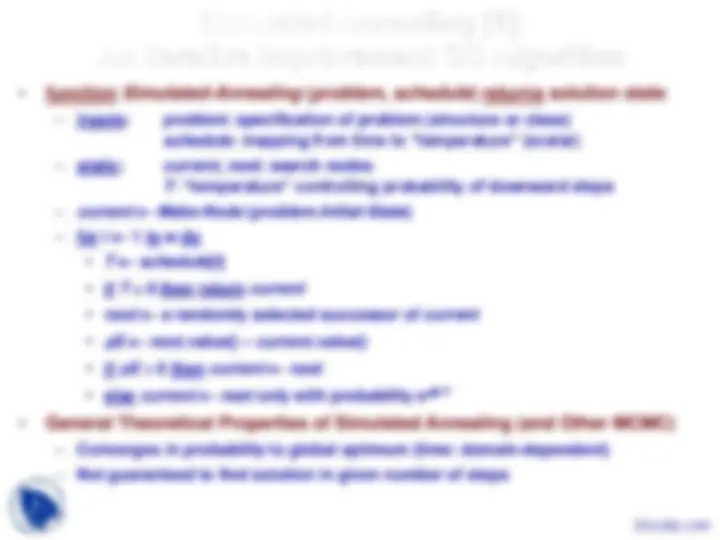
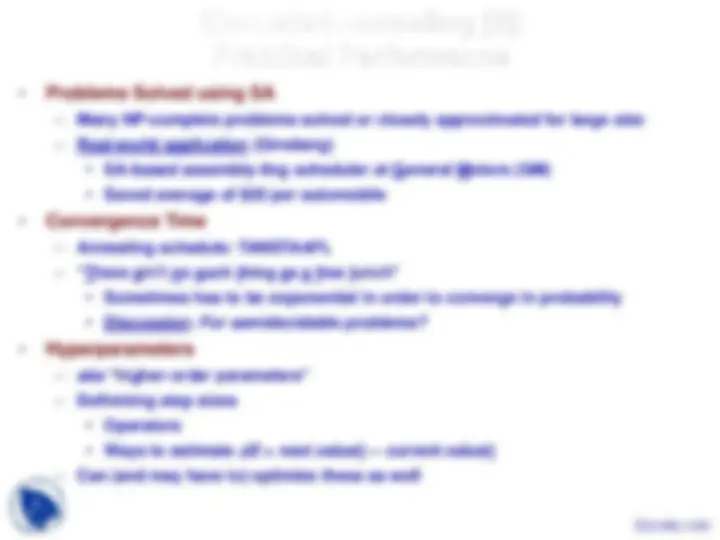
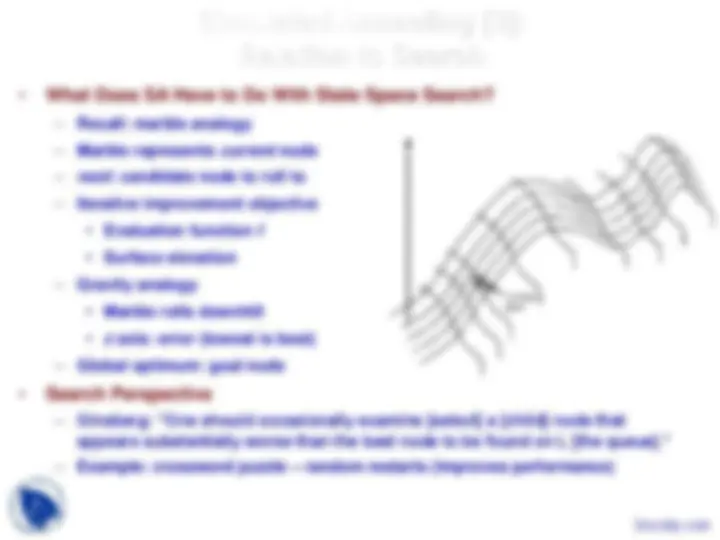
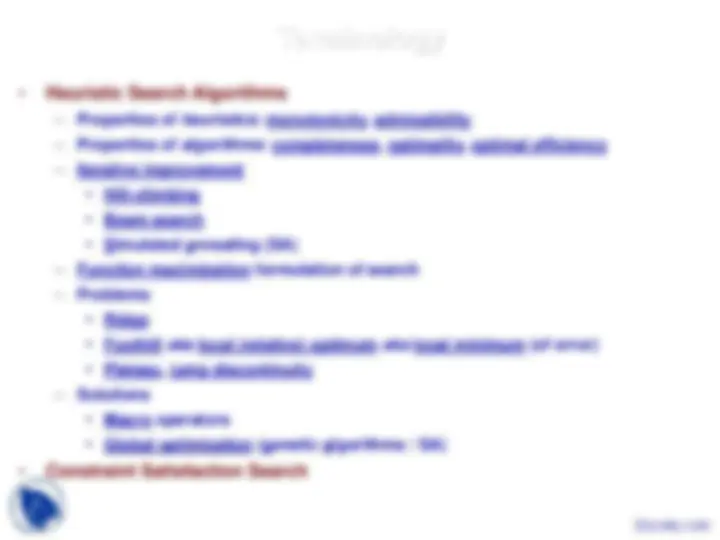
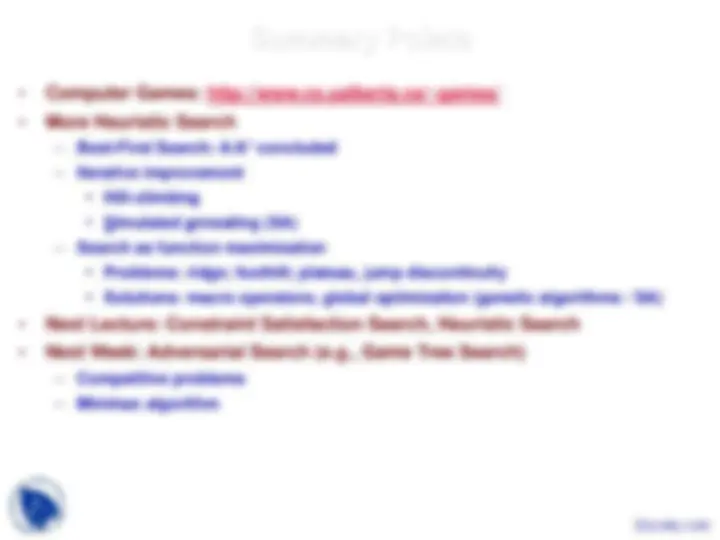


Study with the several resources on Docsity

Earn points by helping other students or get them with a premium plan


Prepare for your exams
Study with the several resources on Docsity

Earn points to download
Earn points by helping other students or get them with a premium plan
Community
Ask the community for help and clear up your study doubts
Discover the best universities in your country according to Docsity users
Free resources
Download our free guides on studying techniques, anxiety management strategies, and thesis advice from Docsity tutors
Some concept of Artificial Intelligence are Agents and Problem Solving, Autonomy, Programs, Classical and Modern Planning, First-Order Logic, Resolution Theorem Proving, Search Strategies, Structure Learning. Main points of this lecture are: Applications, Heuristic Search, Iterative Improvement, Iterative Improvement, Hill-Climbing, Simulated Annealing, Function Maximization, Competitive Problems, Minimax Algorithm, Unreal Tournament
Typology: Slides
1 / 24

This page cannot be seen from the preview
Don't miss anything!

















Normal
Ignited
Engulfed
Destroyed
Extinguished
Fire Alarm
Flooding
DC-ARM – http://www-kbs.ai.uiuc.edu © 1997 University of Illinois
Base case: n 0 (root) always expanded
Induction step: h ( nj +1) _h_* ( nj +1), so f ( nj +1) f ( x ), Q.E.D.
0 1 w n
w
w
E w
measure)
criterion measure)
schedule : mapping from time to “temperature” (scalar)
T : “temperature” controlling probability of downward steps